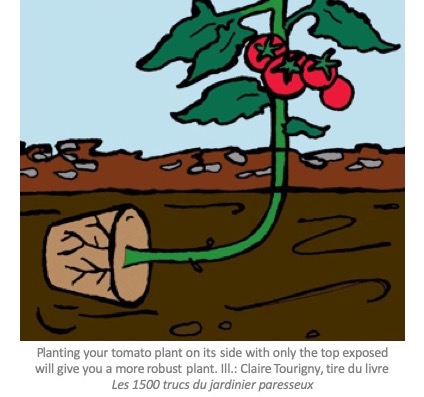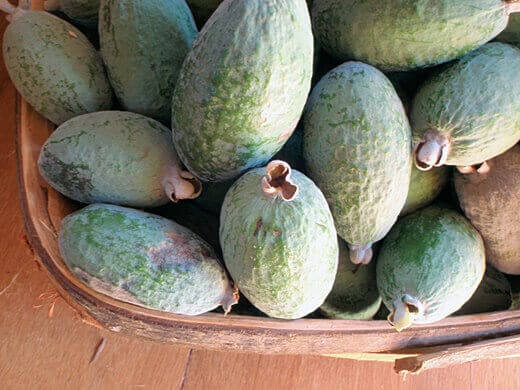Planting tomatoes is a common practice in home gardens, but what if there was a technique that could lead to even bigger and healthier plants? That technique is known as trench planting, and it involves laying tomato plants sideways in shallow trenches instead of standing them up straight in deeper holes. This method of planting tomatoes sideways encourages a more extensive root system, which in turn enhances the plant’s ability to absorb nutrients and water, leading to more robust growth.
How To Trench Plant Tomatoes For Optimal Growth?
When it comes to trench planting tomatoes, the process is relatively straightforward. Begin by preparing a shallow trench, approximately 3 to 4 inches deep and as long as the tomato plant’s stem. Lay the plant on its side, gently bending it upwards so that the top is above the soil surface. Cover the stem with soil, leaving the top leaves exposed. This method encourages the buried stem to develop additional roots, which strengthens the overall plant.
Be sure to water the plants thoroughly after trench planting to settle the soil and provide essential hydration. This technique is particularly effective for leggy seedlings, as it allows the plant to develop a more robust root system. Trench planting can be done in both open gardens and raised beds, offering flexibility for different gardening setups.
Choose a day that’s calm and overcast for transplanting, as the milder conditions will reduce stress on the plants. If you’re working with tall seedlings, remove any lower leaves that will be buried before laying them down in the trench.
What Are The Benefits Of Planting Tomatoes Sideways?
The benefits of trench planting tomatoes are numerous. Firstly, it allows for a more extensive root system to develop along the buried stem, which can lead to improved water and nutrient absorption. This enhanced root development also increases the plant’s stability and resilience against drought and high winds.
Additionally, this method can lead to better yields and healthier plants overall. By giving the tomato plant a more substantial foundation, it can support more fruit and resist diseases more effectively. Trench planting also conserves space, making it an excellent option for gardeners with limited areas.
Lastly, this technique simplifies the planting process, especially for gardeners dealing with leggy or overgrown seedlings. By laying the plants sideways, there’s no need to dig deep holes, which can be labor-intensive and time-consuming.
How Does Trench Planting Improve Tomato Health?
By planting tomatoes sideways, gardeners encourage the growth of adventitious roots along the stem. These roots are particularly adept at absorbing nutrients and moisture from the soil, which is crucial for the development of healthy tomato plants.
A side-planted tomato is less likely to experience stress from drought, as its extensive root system can reach moisture and nutrients that are deeper in the soil. Additionally, a stronger root system means a sturdier plant that can withstand the weight of a heavy fruit load without toppling over.
Moreover, a healthier root system can lead to improved pest and disease resistance. With more roots to absorb nutrients, plants can better resist attacks from common tomato diseases and pests, ultimately leading to a more bountiful and less problematic growing season.
Can You Grow Tomatoes Horizontally In Pots?
While trench planting is typically associated with outdoor garden beds, it’s possible to use a modified version of this technique for growing tomatoes in pots. To do this, choose a large pot and plant the tomato sideways, gently curving the stem upwards. Ensure that the pot is deep enough to accommodate the bent stem and has good drainage to prevent waterlogged roots.
It’s essential to use a high-quality potting mix and keep the soil consistently moist, as potted plants tend to dry out faster than those in the ground. Staking or using a tomato cage can help support the plant as it grows upwards and begins to produce fruit.
While growing tomatoes horizontally in pots may not provide as extensive a root system as trench planting in the ground, it still offers the benefits of encouraging additional root growth along the buried part of the stem.
What Are The Key Steps For Successful Trench Planting?
- Choose healthy and vigorous tomato seedlings, preferably those that are slightly leggy.
- Prepare the soil by incorporating organic matter, such as compost or well-rotted manure, to enhance fertility.
- Dig a shallow trench, only as deep as the seedling’s root ball and long enough to accommodate the stem.
- Lay the seedling on its side, gently bending the top of the plant so it points upwards. Make sure no leaves are buried.
- Cover the stem with soil, pressing down gently to remove air pockets and ensure good contact between the roots and the soil.
- Water the plant immediately after planting to help settle the soil and provide hydration.
- Mulch around the plant to conserve moisture and suppress weeds.
What Mistakes Should You Avoid When Trench Planting Tomatoes?
There are a few common mistakes to avoid when trench planting tomatoes. One of the most significant is planting on a windy day, which can stress the plants and lead to dehydration. Another mistake is failing to remove the leaves that will be buried, as this can lead to rot and disease.
Additionally, gardeners should avoid over-watering, as soggy soil can suffocate the roots and promote fungal diseases. It’s also important not to ignore the importance of soil preparation; amending the soil with organic matter is crucial for the success of trench planting.
Finally, not providing adequate support for the plants as they grow can result in damage to the stems and the overall structure of the plant. Use stakes or cages to help support the plants, especially as they begin to bear fruit.
Related Questions on Sideways Tomato Planting
Is it better to plant tomatoes sideways or bury deeply?
Whether to plant tomatoes sideways or bury them deeply depends on the specific conditions of your garden and the type of tomatoes you are growing. Trench planting is advantageous for encouraging a strong root system along the buried stem, which can lead to a healthier and more resilient plant. However, deep planting has its benefits too, particularly for ensuring the roots access moisture and nutrients below the soil’s surface. Consider the climate, soil type, and tomato variety when deciding which method to use.
Both methods aim to improve root development, but trench planting is particularly beneficial for leggy seedlings that would benefit from additional support. Ultimately, gardeners may choose to experiment with both methods to determine which yields the best results in their garden.
Does trench planting tomatoes work?
Trench planting tomatoes is an effective method that works well for many gardeners. By laying the plant sideways and burying the stem, the plant develops additional roots that help with water and nutrient uptake, leading to stronger and more productive plants. Gardeners have reported increased yields and healthier plants as a result of trench planting.
As with any gardening technique, success depends on proper execution and consistency in care after planting. Ensuring the trench is of the correct depth and the plant is positioned correctly can make a significant difference in the outcome.
Why should you plant tomatoes sideways?
Planting tomatoes sideways promotes the growth of additional roots along the buried stem, which can help the plant absorb more water and nutrients, resulting in a more vigorous and productive plant. It is particularly beneficial for leggy seedlings and can make better use of limited space in a garden.
Additionally, this method can also aid in disease prevention, as the enhanced root system can support a stronger immune response in the plant. Trench planting is also a time-saver, as it eliminates the need to dig deep holes for each plant.
Why should you sprinkle baking soda around your tomato plants?
Sprinkling baking soda around tomato plants is a practice some gardeners use to sweeten the taste of the tomatoes. Baking soda is thought to lower the acidity of the soil slightly, which can result in sweeter fruit. However, it’s important to use this technique with caution, as too much baking soda can alter the soil’s pH too drastically and harm the plants.
It’s also claimed that baking soda can help prevent fungal diseases by creating a less hospitable environment for fungal spores. However, gardeners should use this method as part of a broader disease prevention strategy, including proper spacing, watering, and soil care.
In conclusion, planting tomatoes sideways in a trench can lead to bigger, healthier plants with increased yields. By following the key steps and avoiding common mistakes, gardeners can utilize this method to enhance the growth and health of their tomato plants. Whether you’re planting in pots or in a garden bed, the principles of trench planting can be adapted to suit your needs and lead to a successful tomato harvest.







